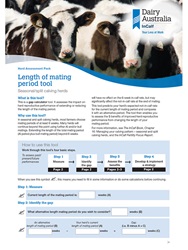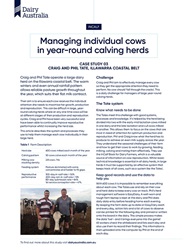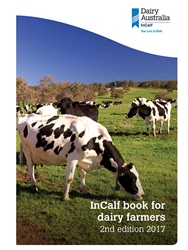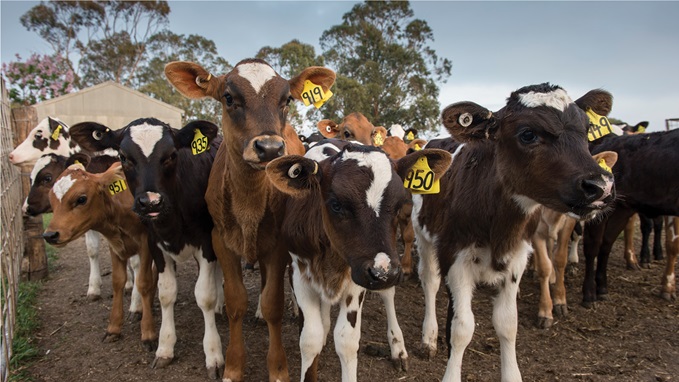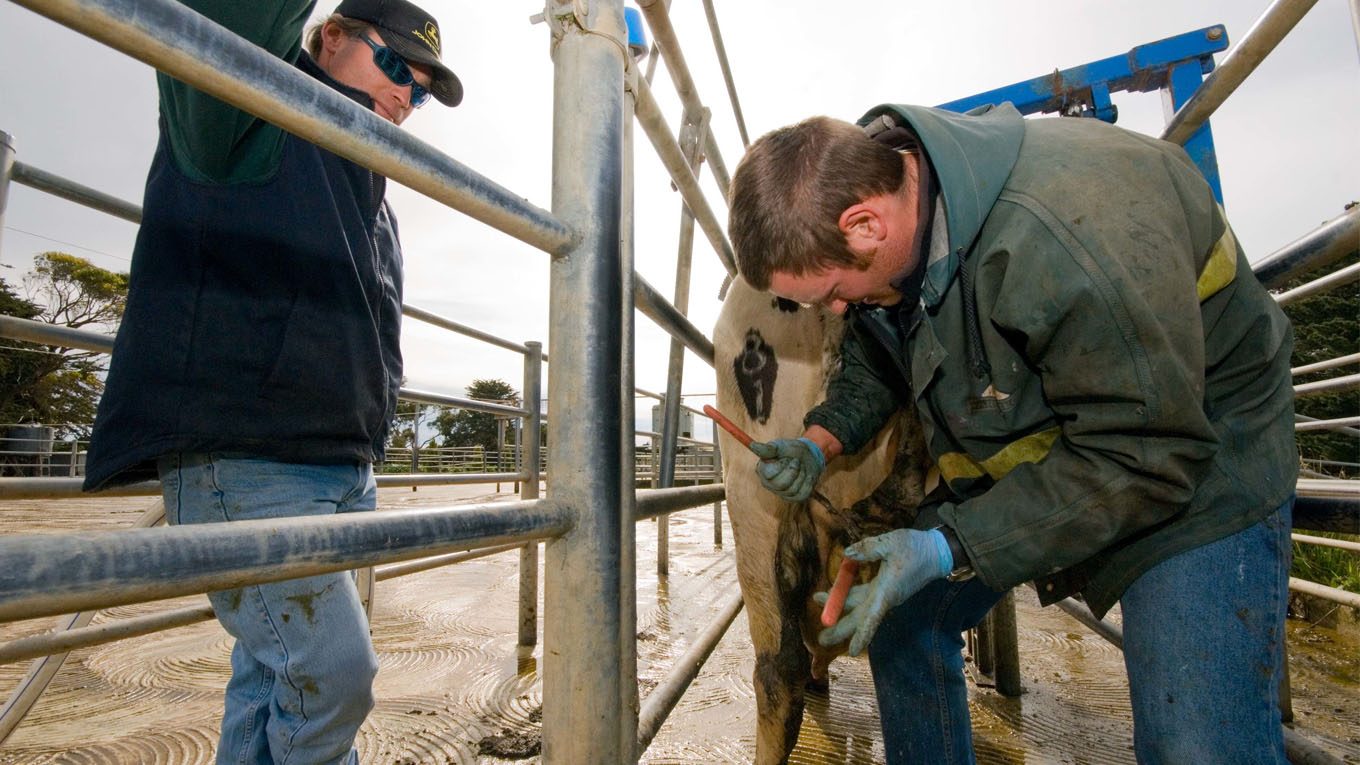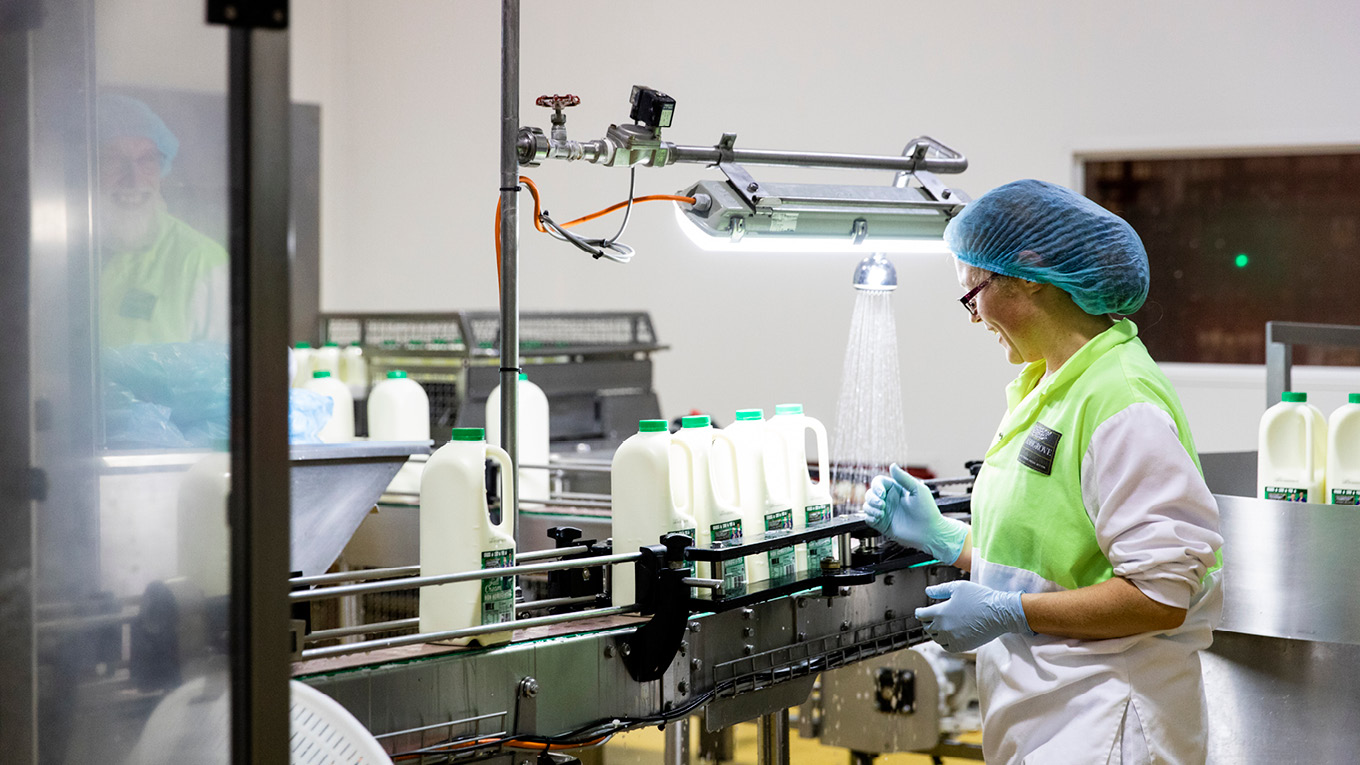Calving Systems
The key measures of success and the approach to improving herd reproductive performance will vary depending on the calving system. The InCalf book covers each of the three main calving systems.
Calving systems
Seasonal calving – In seasonal calving herds, all cows calve in a single time period each year. InCalf recommends using the 6–week in-calf rate and the not-in-calf rate at the end of mating performance measures.
Split calving – These herds calve in two or three distinct time periods each year, usually spring and autumn if two periods. InCalf recommends using the 6–week in-calf rate and the not-in-calf rate after two mating periods performance measures.
Year-round calving – Generally, year-round herds calve for at least 10 months of the year. Batch calving systems that calve groups of cows in set months of the year across the year are a form of year-round calving. InCalf recommends using the 100–day in-calf rate and 200–day not-in-calf rate performance measures.
The calving system governs when to start and stop mating. Choosing a calving system that is profitable and suits the farm's objectives is a critical decision as the calving system drives many aspects of farm management.
Some tools and publications to help measure and manage herd calving pattern are outlined below.
For seasonal and split calving herds
In seasonal and split calving herds, calving pattern, that is the spread of calvings in a given calving period, has a major impact on subsequent herd reproductive performance.
Cows that calved in the first three weeks of calving typically have 6–week in-calf rates around 70%, while very late calved cows that calve after week nine of calving typically have 6–week in-calf rates around 20%. Not-in-calf rates are also affected.
A desirable calving pattern has most cows calving in the first six weeks of the calving period,
with few late-calving cows to reduce herd reproductive performance.
Many herds have calving periods that stretch beyond eight weeks. Not only does this contribute
to reduced reproductive performance, it also has implications for many key aspects of farm
management, including:
- scheduling of tasks
- cash flow
- labour
- pasture
- feeding management.
More information on managing calving pattern in seasonal and split calving herds can be found in Chapter 5 of the InCalf Book for Dairy Farmers (2nd Edition).
The Calving Pattern Tool can be used to measure the pattern of calvings within a calving group and identify the gap between the actual and desired calving pattern. It also provides an assessment of the cost benefits of closing this gap through improved herd reproductive performance. Closing this gap can also improve milk income and feed costs.
The Length of Mating Period Tool can be used to assess the impact of extending or reducing the mating period.
Length of mating period tool
Case studies: Maintaining a tight calving pattern without routine inductions
Stuart Burr, Ringarooma, Tasmania
Stuart share-farms for Geoff and Stan Cox at Ringarooma in north-eastern Tasmania.
Stuart began share-farming in 2008/2009, and has been motivated to increase his wealth by growing his asset base through good reproductive performance of his stock.
InCalf case study: Stuart Burr
Tony Clarke, Edith Creek, Tasmania
Tony is a part owner and manager of Whitewater Dairy at Edith Creek, north-western Tasmania. Although he lives two and a half hours away from the farm, he is closely involved with its operation, visiting at least once a week.
The owners of Whitewater Dairy purchased the farm in 2011. It is milking 1000 cows on a milking platform of 310 hectares and the farm has now reached ‘steadystate’.
InCalf case study: Tony Clarke
Phasing out calving induction
For year round calving herds
In a year-round calving herd, it is easy to lose track of the length of time between when cows calve and when they should be first mated and how many times they have been mated this lactation.
It is important to make a conscious decision on how long to continue to mate a cow that is proving difficult to get in calf. A long gap between calving and when the cow is first mated is common and this will reduce the 100–day in-calf rate. Allowing cows too many matings increases the 200–day not-in-calf rate.
These reductions in reproductive performance will lead to increases in the average days in milk, reduced milk production and profit.
InCalf book for dairy farmers: 2nd edition
Voluntary waiting period tool
Synchrony programs
Information on heat synchronisation, which involves treatment of cows with reproductive drugs in order to predictably time when their next heat and/or ovulation will occur.


